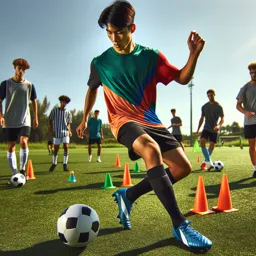Introduction
Skiing is a dynamic and exhilarating winter sport that combines athleticism with breathtaking alpine scenery. Whether you’re new to snow-covered slopes or simply curious about getting started, this guide covers the fundamentals of skiing, including types, techniques, gear, and tips to ensure a safe and enjoyable experience.
What Is Skiing?
Skiing involves gliding across snow using a pair of skis attached to your boots. Originally developed as a means of transportation in snowy regions, it has evolved into a popular global sport with recreational, competitive, and adventurous branches. From casual family outings to Olympic events, skiing offers something for everyone.
Types of Skiing
There are several distinct styles of skiing, each offering unique terrain and challenges:
- Alpine Skiing: Also known as downhill skiing, it’s the most common form found at ski resorts. Lifts carry skiers to the top of groomed runs of varying difficulty.
- Cross-Country Skiing: Performed on flat or rolling terrain, this style emphasizes endurance and is great for cardiovascular fitness.
- Freestyle Skiing: A creative and athletic discipline that includes jumps, tricks, and terrain park features.
- Backcountry Skiing: Takes place in unmarked and ungroomed areas, demanding a high level of skill, fitness, and avalanche safety knowledge.
Essential Skiing Techniques
Starting with the right techniques is key to both progress and safety on the slopes:
- Snowplow (Pizza): A beginner-friendly technique that helps control speed and stop on gentle slopes.
- Parallel Turns: A smooth turning method where both skis stay aligned—ideal for intermediate skiers.
- Edging: Using the edges of your skis for traction and turning control, especially useful on icy or steep terrain.
Gear Guide for Beginners
Having the right gear not only enhances your performance but also keeps you safe and comfortable:
- Skis: Should be selected based on your height, weight, and skill level.
- Ski Boots: A snug, supportive fit is crucial for stability and control.
- Bindings: Connect your boots to your skis; professional adjustment ensures proper release during a fall.
- Poles: Help maintain balance and rhythm, especially on flat terrain.
- Helmet: Protects your head from impact—non-negotiable for all levels.
- Goggles and Gloves: Protect your eyes and hands from snow, wind, and cold.
- Winter Clothing: Use layered clothing, including a moisture-wicking base, an insulating layer, and a waterproof outer shell.
Tips for a Great Skiing Experience
Follow these tips to build skills while enjoying your time on the mountain:
- Start with a Lesson: Certified instructors can teach you proper techniques and build your confidence.
- Practice on Easy Terrain: Begin with gentle slopes and progress gradually.
- Warm Up and Stretch: Prevent injury by preparing your body before and after skiing.
- Stay Aware and Follow Rules: Respect slope signage, maintain control, and give right-of-way where required.
- Take Breaks and Stay Hydrated: Listen to your body and avoid skiing while overly tired.
Conclusion
Skiing opens up a world of excitement, from peaceful glides across snowy trails to adrenaline-filled descents down mountain slopes. With the right preparation, technique, and gear, anyone can enjoy the magic of winter sports. Start small, stay safe, and let each run build your confidence and love for the snow.

































